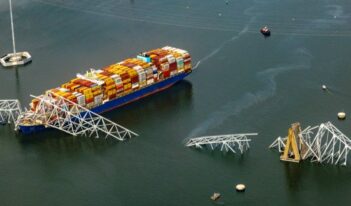
EPA report suggests strategies for mitigating development’s environmental effects.
Human development has unequivocal implications for the environment and human health. Not only is the global climate system warming from increased atmospheric concentrations of greenhouse gases, but heightened levels of indoor and outdoor air pollution also threatens human longevity.
Responding to the environmental concerns raised by patterns of human development, the Environmental Protection Agency’s (EPA) Office of Sustainable Communities recently published a report, Our Built and Natural Environments, as part of its Smart Growth Program. In the report, an update to a well-received report published in 2001, the EPA analyzes the direct and indirect effects of development. The EPA then suggests strategies to the government on how “to make smart development decisions” and to mitigate environmental impacts.
According to the EPA, the built environment, which constitutes “patterns of development, transportation infrastructure, and building location and design,” directly affects the natural environment in several ways. Diminished watershed surface areas, the degradation of natural ecosystems, and diminished biodiversity are just some of the direct effects of development.
Watersheds, sometimes referred to as drainage basins, help soak up rainwater and transport nutrients across water ecosystems. The EPA posits that the proportion of watersheds that are covered by impervious surfaces, such as roads and sidewalks, “is a good indicator of the degree to which development [has affected] water ecosystems and water resources” within a community. Flooding increases and water quality degrades when impervious surfaces replace watershed areas. The EPA estimates that impervious surfaces cover more than sixty percent of watershed areas in some cities.
Development has also destroyed and degraded natural habitats. When new buildings are constructed, not only is natural habitat destroyed, but the remaining vegetation is often replaced with non-native species during landscaping. According to the EPA report, “habitat destruction and degradation contribute to the endangerment of more than 85 percent of species listed…under the federal Endangered Species Act.”
Fragmentation, which occurs when land is developed in patches, also affects natural habitats and biodiversity. According to the EPA, fragmentation affects “virtually all taxonomic groups” and leads to the decline of plant and animal populations. In turn, an increase in mice, which are good vectors for Lyme’s disease, correlates with the decline of other mammalian species and exposes humans to an increased risk of the disease.
Similarly, there are indirect environmental and human health consequences to development. According to the EPA report, “how we develop land determines the distribution of jobs, housing, and community activities, which in turn determines how far people travel…to get around.” The EPA argues that the evolution from densely populated cities to dispersed suburban neighborhoods since the economic growth of World War II has indirectly affected travel behavior because more people are required to use motor vehicles for transportation. The increase in vehicle usage not only contributes to outdoor air pollution, but is also associated with thousands of American deaths per year.
The EPA suggests that both the direct and indirect environmental effects associated with developing communities could be mitigated if policy-makers change “where and how” communities are built.
“Where [policy-makers] locate development has significant impacts on environmental resources,” according to the EPA. The EPA recommends that new developments should be located “in or adjacent to already-developed areas.” This strategy would prevent further habitat fragmentation and limit habitat degradation and destruction.
The EPA also believes that sensitive areas should be safeguarded from development. Developing these areas, which include coastal zones and floodplains, would otherwise worsen the ecological effects of global warming more than developing non-sensitive areas, according to the EPA.
Additionally, the EPA recommends that policy-makers should strive to alter how communities are built. The EPA suggests that communities should be designed to encourage walking and biking for transportation, rather than the use of motor vehicles. According to the EPA, reducing vehicle usage would lessen the number of car crashes as well as lessen greenhouse gas emissions.
The EPA believes that the United States “can continue to grow and can build a strong foundation for lasting prosperity” while also protecting the environment and human health if its recommendations for development are adopted.



